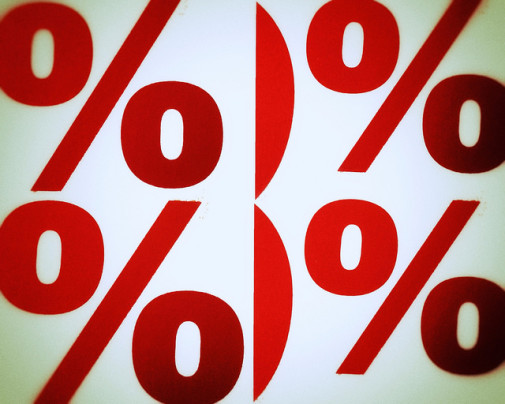When a contract to buy a house is signed, the sale is considered pending until the mortgage process plays out and the deal is closed. Because there are usually a few weeks in between the time an offer is accepted and the sale is finalized, pending sales are a good indicator of where existing-home sales are headed in the coming months. That’s why the National Association of Realtors Pending Home Sales Index tracks contract signings – as a way of forecasting what’s ahead for the housing market. In August, the index showed a 2.6 percent decline from the month before. Lawrence Yun, NAR’s chief economist, says the recent hurricanes have something to do with the drop and it may ultimately mean home sales fall slightly below last year’s level. “The supply and affordability headwinds would have likely held sales growth just a tad above last year, but coupled with the temporary effects from Hurricanes Harvey and Irma, sales in 2017 now appear will fall slightly below last year,” Yun said. “The good news is that nearly all of the missed closings for the remainder of the year will likely show up in 2018, with existing sales forecast to rise 6.9 percent.” More here.
Archive for September 2017
Mortgage Rates Jump But Buyers Stay Active
According to the Mortgage Bankers Association’s Weekly Applications Survey, average mortgage rates increased last week across all loan categories, including 30-year fixed-rate mortgages with both conforming and jumbo balances, loans backed by the Federal Housing Administration, and 15-year fixed-rate loans. The increase brought rates to their highest level in a month. Joel Kan, an MBA economist, said rates were reacting to news from the Fed. “Mortgage rates increased to their highest levels in almost a month following a relatively hawkish Fed statement last week, driving the decline in refinance activity,” Kan told CNBC. And, it’s true that higher rates did slow refinance demand. In fact, it was 4 percent lower than the previous week. At the same time, however, demand for loans to buy homes was up 3 percent, showing that there is still strong demand from prospective home buyers looking to buy a house this fall. The MBA’s weekly survey has been conducted since 1990 and covers 75 percent of all retail residential mortgage applications. More here.
Economic Optimism Drives Demand For Homes
A new survey from the National Association of Realtors shows Americans are optimistic about their economic situation and increasingly think now is a good time to buy or sell a home. The quarterly survey found a spike in both the number of current renters who think now is a good time to buy a house and homeowners who say it’s a good time to list their house. In fact, among current homeowners, the number who said it was a good time to sell hit a record high. Lawrence Yun, NAR’s chief economist, says the optimism is largely driven by economic conditions. “Jobs are plentiful, wage growth is finally showing signs of life, home values are up considerably in the past five years and the stock market is at record highs,” Yun said. “The economy is not perfect, and growth overall is still sluggish, but the financial health of the typical household looks as healthy as it has since the recession.” The survey’s results also show increasing positivity among Americans about their personal financial situation and their outlook for the next six months. More here.
Mortgage Lenders Say Credit Is Easier To Get
Whether or not you qualify for a loan depends, in some part, to how available mortgage credit is at the time. If lending standards are tight, you may have a harder time obtaining a mortgage than you would during another time when standards are looser. For example, following the housing crash, qualifying for a loan became more difficult for borrowers whose financial situation didn’t meet new, stricter guidelines. However, those same borrowers, before the crash, may have had an easier time getting a loan due to looser standards. Because of this, Fannie Mae conducts a quarterly survey of senior mortgage executives to get an idea of whether or not credit is tightening or loosening. According to their most recent survey, the net share of lenders who reported easing credit standards over the prior three months reached a new survey high. Doug Duncan, Fannie Mae’s chief economist, says it’s the continuation of a trend that started late last year. “Lenders further eased home mortgage credit standards during the third quarter, continuing a trend that started in late 2016,” Duncan said. “Lenders’ comments suggest that competitive pressure and more favorable guidelines for GSE loans have helped to bring about more easing of underwriting standards for those loans.” This is good news for prospective home buyers, as it means you’ll have a better chance of qualifying for a loan to buy a house. More here.
What’s An Uneven Market Mean For Buyers?
Since the housing crash and financial crisis, a slow and steady recovery has taken place. Home prices, for example, have been rising now for a few years and, in some markets, have surpassed their previous peaks. But though there has been progress, there is an unevenness about the recovery. For example, the higher end of the housing market has rebounded much quicker than the lower end has. And, according to Zillow chief economist, Dr. Svenja Gudell, it’s led to some disparity between the two ends of the housing market. “Most new construction has been at the higher end of the market, so demand for the limited supply of entry-level homes is pushing up their values, but these homes also lost more value when the bubble burst,” Gudell says. “Many of these homeowners are still waiting to see their homes come back to where they were about 10 years ago.” So what does this all mean? It means limited supply will lead to more competition for the entry-level homes that are available. But, as demand pushes home prices higher, there may also be more current homeowners deciding to sell their starter homes in search of something bigger. As that happens, prices will level off and there will be more choices for buyers looking for an affordable, entry-level home. More here.
Buyer Demand High As Summer Winds Down
There is no shortage of Americans who want to buy homes. In fact, buyer demand has been high all year. But despite growing interest in homeownership, home sales have not had a breakthrough year. Why is that? Well, according to Lawrence Yun, the National Association of Realtors’ chief economist, it has to do with inventory. “Steady employment gains, slowly rising incomes, and lower mortgage rates generated sustained buyer interest all summer long, but unfortunately, not more home sales,” Yun said. “Sales have been unable to break out because there are simply not enough homes for sale.” In fact, the latest numbers show home sales in August were just 0.2 percent above where they were one year earlier. But what that means for hopeful home shoppers this fall depends on where you live. For example, sales were up 10.8 percent in the Northeast and 2.4 percent in the Midwest, which indicates that conditions may be more favorable for buyers in those regions than other locations. Buyers also should be prepared to move quickly, as the NAR’s most recent data shows more than half the homes sold in August were on the market for less than a month. More here.
Mortgage Rates Mostly Steady Last Week
According to the Mortgage Bankers Association’s Weekly Applications Survey, average mortgage rates were mostly steady last week, with small increases seen for 30-year fixed-rate mortgages, loans backed by the Federal Housing Administration, and 15-year fixed-rate loans. Average rates for jumbo loans fell slightly from the week before. Despite mortgage rates still hovering in lower-than-normal range, however, demand for mortgage applications was down 9.7 percent for the week. Some of that fall may have had to do with the hurricanes in Texas and Florida. Joel Kan, an MBA economist, told CNBC the effect the storms had was dramatic. “Florida had a 22 percent decrease in overall mortgage application activity over the week,” Kan said. “Texas rebounded from Harvey’s impact, showing a 27 percent increase in applications last week.” Whatever the case, it is clear that the weekly report may have been particularly volatile as a result of the hurricanes. The MBA’s survey has been conducted since 1990 and covers 75 percent of all retail residential mortgage applications. More here.







